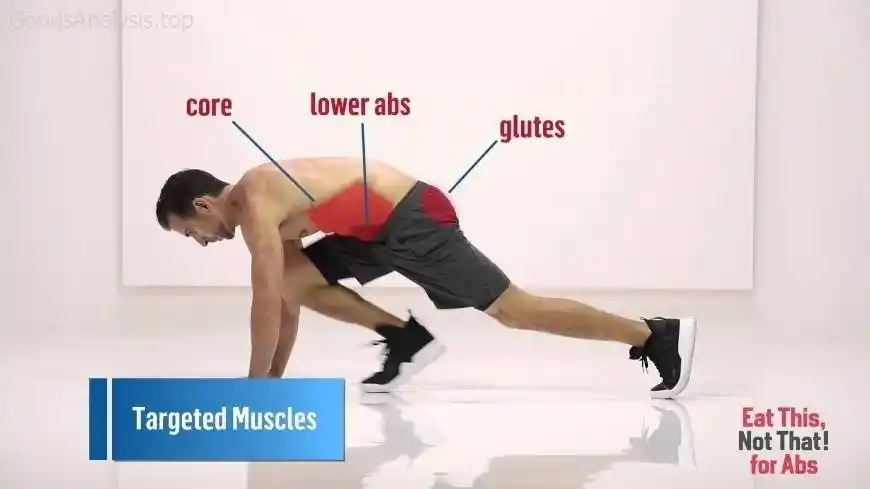Burpees are one of those exercises that get both love and hate from the fitness community. Whether you’re looking to build strength, improve cardiovascular fitness, or just want an effective full-body workout, burpees offer all of this in one intense package. But how do you properly do a burpee? Is it safe for everyone? And what should you be cautious of? Let’s dive into the science, the technique, the benefits, and the challenges of burpees, with practical tips that anyone can follow.
What Exactly Is a Burpee?
At its core, a burpee is a full-body exercise that combines several movements into one: a squat, a jump, and a push-up. It’s often considered a “compound movement,” meaning it engages multiple muscle groups in a single action. The basic burpee sequence looks like this:
- Start Standing: Begin by standing with your feet shoulder-width apart, arms at your sides.
- Squat Down: Lower your body into a squat position, bringing your hands to the floor.
- Jump Back Into Plank: Jump your feet back so that your body forms a straight line from head to heels (the “plank” position).
- Push-Up (Optional): Perform a push-up if you’re adding this step for extra intensity. This isn’t a must but can significantly up the difficulty.
- Jump Forward: Jump your feet back toward your hands to return to a squat position.
- Jump Up: Explode upwards, jumping as high as you can with arms overhead, before landing softly back into the standing position.
This simple (but not easy!) movement engages nearly every muscle group in the body, from legs and core to arms and chest. The beauty of the burpee lies in its simplicity, but that doesn’t mean it’s a walk in the park.
The Science Behind the Burpee: Why It’s So Effective
Why should you add burpees to your routine? Research and expert opinions agree that burpees are one of the best full-body exercises for improving both strength and endurance. Here’s what makes them so effective:
- Cardiovascular Boost: Burpees are intense, meaning they get your heart rate up fast. This makes them an excellent choice for improving cardiovascular fitness and burning fat. In fact, studies have shown that high-intensity interval training (HIIT) — of which burpees are a key component — can improve heart health and increase fat-burning efficiency. According to the American Heart Association, just a few minutes of HIIT can boost heart function and endurance significantly.
- Strength and Endurance: Burpees hit multiple muscle groups — including the chest, shoulders, arms, legs, and core — meaning they’re not just good for the heart but for building strength and muscle endurance. The push-up and plank sections challenge upper body muscles, while the jump and squat sections target the legs.
- Improved Coordination and Balance: The explosive nature of burpees improves agility and balance, as you constantly go from a squat to a plank to a jump. According to sports science experts, exercises like burpees help fine-tune the nervous system’s coordination and body control.
- Calorie Burn: Because of the combined high intensity and full-body engagement, burpees are incredibly effective at burning calories. Studies from Harvard Medical School show that you can burn up to 10 calories per minute doing burpees, depending on your weight and effort level.

Common Mistakes and How to Avoid Them
While burpees seem straightforward, they’re easy to do incorrectly, especially if you’re rushing through them in a workout. Here are the most common mistakes and tips for fixing them:
- Not Maintaining Proper Form: A burpee requires multiple movements, and it’s tempting to just “go through the motions.” But poor form can lead to injuries, especially in the lower back and shoulders. Make sure to keep your body aligned — your back should stay straight in both the plank and squat positions. Fix: Engage your core to protect your lower back, and don’t let your hips sag during the push-up or plank.
- Jumping Too High or Too Low: When performing the jump, aim for height, but don’t overdo it. Jumping too high can lead to unnecessary strain on your knees, and jumping too low won’t be effective. Fix: Focus on explosive power, but keep the jump controlled and fluid.
- Rushing Through: The goal isn’t to complete the most burpees in the shortest amount of time; it’s to do them with proper form. Speeding through them can compromise form and increase the risk of injury. Fix: Focus on quality, not just quantity. Do fewer burpees with good form, rather than pushing yourself to do as many as possible in a short time.
- Skipping the Push-Up: Some people skip the push-up to make burpees easier, but that eliminates a lot of the upper-body strength benefits. If you’re not ready for push-ups, it’s okay to leave them out for now, but always aim to add them in later. Fix: Start with a basic burpee, and add the push-up once you’ve mastered the technique.
Who Should Do Burpees, and Who Should Avoid Them?
Burpees are generally safe for most people, but like any exercise, they’re not for everyone. Here’s a breakdown:
- For Beginners: Burpees can be intimidating at first, but with a proper modification, even beginners can benefit. Start with a half-burpee (eliminate the push-up and jump) and work your way up.
- For Older Adults: While burpees can be tough on the joints, older adults who are in decent physical shape and have no pre-existing injuries can still benefit. However, modifications such as skipping the jump or push-up can make burpees more accessible.
- For Those with Joint Issues: If you have knee, hip, or back problems, burpees may put too much stress on these areas. In this case, you may want to consult with a fitness professional or a physical therapist before attempting them. You might be able to do modified versions or substitute burpees with lower-impact exercises.
- Pregnancy: As your body changes during pregnancy, it’s important to avoid exercises that can strain the core or cause you to lose balance. If you’re pregnant, always check with a doctor before doing high-impact exercises like burpees.

Burpee Variations: Making It Your Own
If standard burpees aren’t your thing, or you want to change things up, there are several variations you can try:
- Burpee with Push-Up: Add a push-up at the bottom of the movement to increase upper body strength.
- Squat Thrusts: Skip the jump and push-up if you’re just starting out or need a lower-impact version.
- Burpee Box Jumps: Instead of jumping straight up, jump onto a box or platform for a more explosive variation.
- Mountain Climber Burpees: Add mountain climbers between the push-up and jump for an additional core and cardio challenge.
Real-World Opinions on Burpees
Here’s what people around the world think about burpees based on their own experiences:
- Maria (45, USA): “I started doing burpees as part of a bootcamp class, and at first, I hated them. But after a few weeks, I could feel my endurance and strength improving. Now, I can do 20 in a row, and it feels amazing. Just don’t rush them — focus on form first!”
- John (32, UK): “Burpees are tough, but I do them as part of my HIIT routine. They help with fat loss and strength. However, if you’ve got bad knees, I’d say skip the jump and focus on the squat thrust version instead.”
- Asha (55, India): “I have knee issues, so I modify the burpee by not jumping and avoiding the push-up. Still, I feel it working all my muscles and get a good sweat in. It’s a great exercise for people like me who want to stay fit as they age.”
- Carlos (25, Brazil): “Burpees are my go-to when I need to push myself. Sometimes, I do them for an entire 20-minute workout, with no breaks. I always feel exhausted but great afterward!”
- Leila (60, Australia): “I’ve recently added burpees into my routine. Initially, I was skeptical because of my age, but the modified versions work wonders. I feel stronger, and my energy levels have definitely increased.”
Conclusion
Burpees are one of the most effective exercises you can do, offering a full-body workout that’s hard to beat. While challenging, they can be tailored to any fitness level with modifications. Just make sure to practice proper form, start slow, and be aware of your body’s limitations. Remember, consistency is key, and burpees can be a valuable part of any workout routine if done correctly.
Now, get out there and burpee your way to better fitness — but maybe not all in one go!









